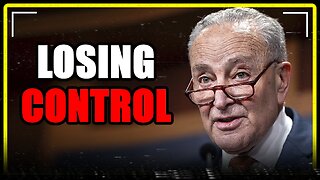Premium Only Content

Enhancing website speed through strategic optimization techniques — Subraa
The speed at which a website loads is not just a convenience; it’s a critical factor influencing user satisfaction and search engine rankings. Web designer play a pivotal role in enhancing website speed through strategic optimization techniques.
1. Image Compression:
Optimal image compression reduces file sizes without compromising quality. This ensures swift loading times, especially for image-heavy websites.
2. Browser Caching:
Utilizing browser caching allows frequently accessed resources to be stored locally, reducing the need for repeated downloads and expediting subsequent page loads.
3. Minification of CSS and JavaScript:
Minifying CSS and JavaScript files by removing unnecessary characters reduces file sizes, enabling faster loading without compromising functionality.
4. Content Delivery Network (CDN):
Leveraging a CDN distributes website content across servers worldwide, allowing users to access data from a server nearest to them, significantly reducing latency.
5. Efficient Coding Practices:
Clean, efficient coding practices, such as reducing unnecessary white spaces and line breaks, contribute to smaller file sizes and expedite rendering.
6. Prioritized Loading:
Implementing critical rendering paths ensures that essential content and resources are loaded first, allowing users to interact with the page while the rest loads in the background.
7. Lazy Loading of Images:
Adopting lazy loading for images delays the loading of off-screen images until the user scrolls to the specific section, conserving bandwidth and accelerating initial page load.
8. Asynchronous Loading of JavaScript:
Asynchronous loading of non-essential JavaScript enables simultaneous loading of other page elements, preventing JavaScript from blocking the rendering process.
9. Responsive Design:
Responsive design not only caters to various devices but also aids in faster loading, especially on mobile devices with slower network connections.
10. Server Response Time Optimization:
Ensuring efficient server response times involves optimizing server configurations, reducing unnecessary redirects, and utilizing caching mechanisms.
11. Minimized HTTP Requests:
Reducing the number of HTTP requests by combining CSS and JavaScript files or utilizing sprites minimizes the time required for fetching resources.
12. Web Font Optimization:
Using web fonts judiciously and employing techniques like font subsetting reduce the impact on loading times, especially for users with slower internet connections.
13. Regular Performance Audits:
Conducting regular performance audits using tools like Google PageSpeed Insights helps identify specific areas for improvement and ensures ongoing optimization.
Website speed is a non-negotiable element for user satisfaction and search engine favor. Web designers who master these speed optimization techniques not only create a seamless user experience but also position websites for better visibility and rankings in search engine results.
Pop over here: https://www.subraa.com/
-
 1:17:52
1:17:52
Dialogue works
3 days ago $2.01 earnedMartin Armstrong: This Is How World War III Starts… And It Already Has
14.3K12 -
 38:16
38:16
daniellesmithab
3 days agoAlberta Update: Getting Kids Back to the Classroom
6.42K9 -
 20:48
20:48
BlaireWhite
5 days agoTrans TikTokers Are Crashing Out (Over Nothing)
7.97K5 -
 2:07:06
2:07:06
Side Scrollers Podcast
19 hours agoHasan Piker CAUGHT LYING AGAIN + Twitch URGES LEFTIST IDEOLOGY + More | Side Scrollers
54.4K10 -
 8:40
8:40
MattMorseTV
15 hours ago $7.10 earnedSchumer just KICKED OFF the Left-Wing CIVIL WAR.
11.7K25 -
 21:39
21:39
Nikko Ortiz
2 days agoI Take A North Korean Shooting
14.3K5 -
 1:46:26
1:46:26
The Michelle Moore Show
18 hours ago'The Religion Invasion In the U.S. and the Deep State Agenda' Guest, Mark Taylor: The Michelle Moore Show (Nov 3, 2025)
21.3K22 -
 LIVE
LIVE
TruthStream with Joe and Scott
5 days agoSovereign Codes & Cosmic Infrastructure,Ufo's, UAP's, Monads, Matrix Satellites, Interstellar Visitors, SYRONA #505
346 watching -
 LIVE
LIVE
Lofi Girl
2 years agoSynthwave Radio 🌌 - beats to chill/game to
161 watching -
 5:55:11
5:55:11
MattMorseTV
11 hours ago $93.78 earned🔴Trump's '60 Minutes' INTERVIEW + MUCH MORE.🔴
157K48